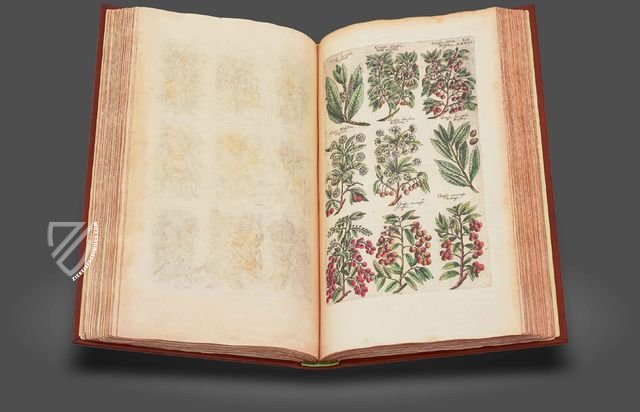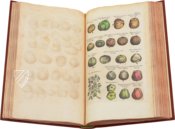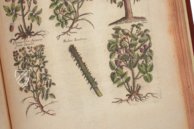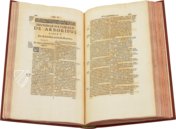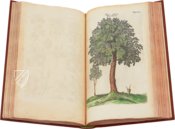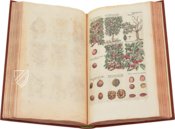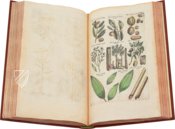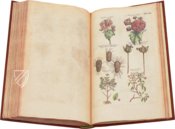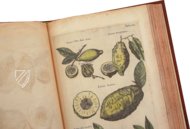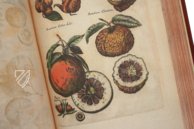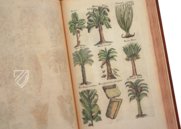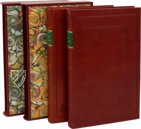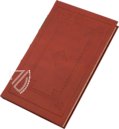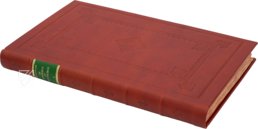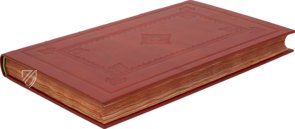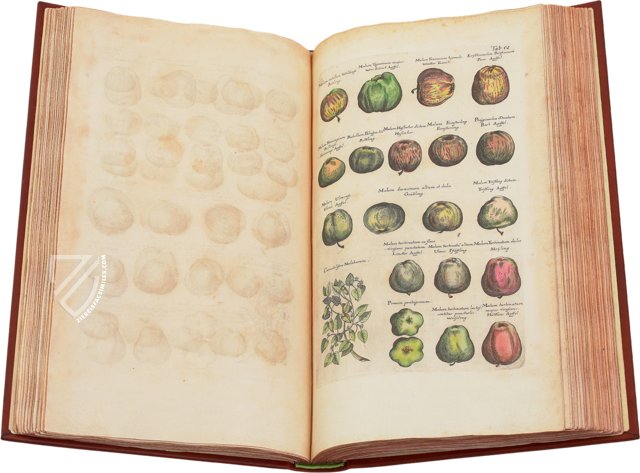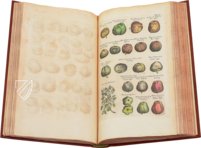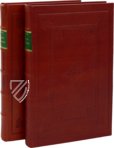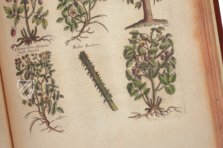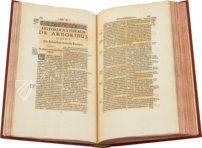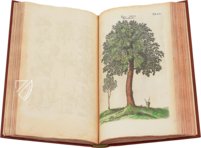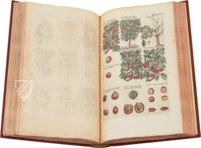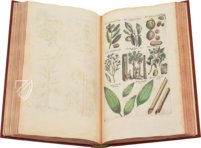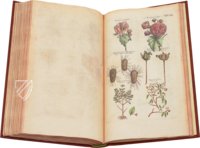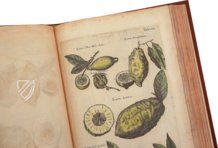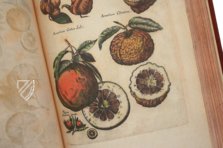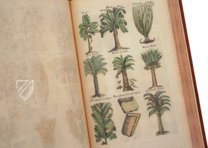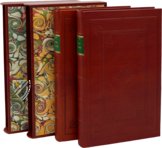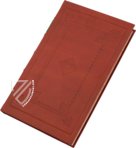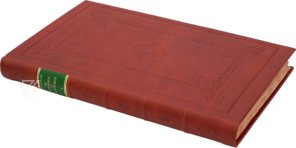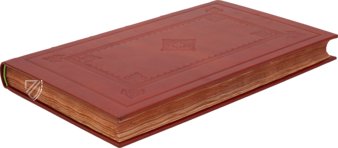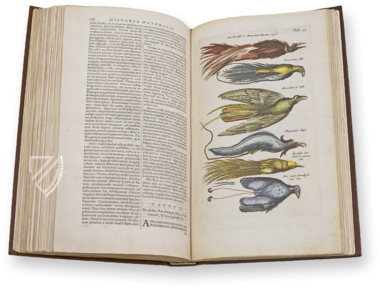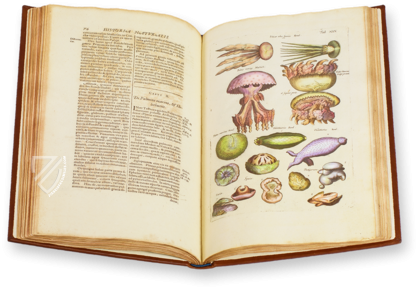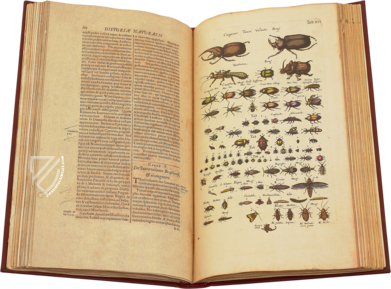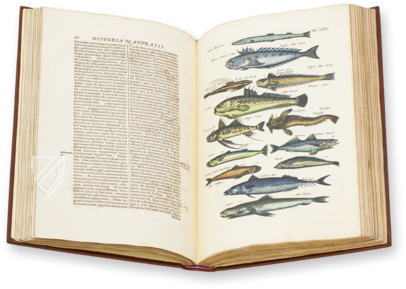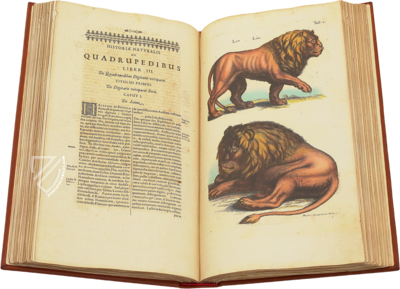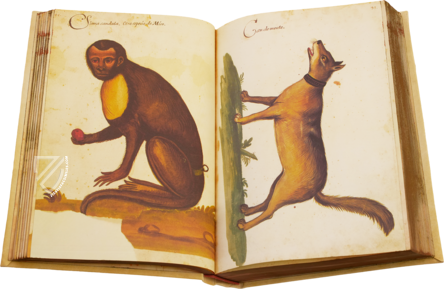Historia Naturalis: De Arboribus et Fructicibus
(7,000€ - 10,000€)
The Historia Naturalis by John Jonston was the primary work of the zoology and botany of the late 17th and early 18th centuries. In his comprehensive encyclopedic work, the Polish doctor and Renaissance man wanted to compile the knowledge of the world, order it, and thus make it more easily accessible. One of the books of his Historia Naturalis is concerned with botany. The wonderfully colored copperplate engravings, which illustrated all of the descriptions and adorn the entire work of John Jonston, originated from Matthäus Merian the Younger. This vividly artistic furnishing of the work is also responsible for the great reception and popularity enjoyed by the Historia Naturalis of John Jonston.
Historia Naturalis: De Arboribus et Fructicibus
The Historia Naturalis by John Jonston was the primary work of the zoology and botany of the late 17th and early 18th centuries. In his comprehensive encyclopedic work, the Polish doctor and Renaissance man wanted to compile the knowledge of the world, order it, and thus make it more easily accessible. One of the books of his Historia Naturalis is concerned with botany. The wonderfully colored copperplate engravings, which illustrated all of the descriptions and adorn the entire work of John Jonston, originated from Matthäus Merian the Younger. This vividly artistic furnishing of the work is also responsible for the great reception and popularity enjoyed by the Historia Naturalis of John Jonston and the fascination it still invokes in its beholders.
A Significant Renaissance man
The author of the famous biological book of reference was John Jonston (1603–1675), the son of Scottish parents, a doctor, and a Renaissance man from Poland. Through tours and visits of study across all of Europe and for the sake of his exceptional intellectual curiosity, John collected a general knowledge that encompassed a variety of disciplines. He spoke several languages and transmitted his knowledge as a tutor and tour guide to young nobles, among other things. He was famous nevertheless through his numerous publications concerning raising children, philosophy and theology, history, but also medicine and mineralogy, among others. Jonston’s pedagogical aim was a comprehensive general education.
The Famous Historia Naturalis
John Jonston attained great fame due to his incomplete magnum opus. His comprehensively illustrated depiction of the world of plants, animals, and people was the primary work of zoology and botany for a century until the publications of Carl von Linnés’ Systema naturae. One of the volumes is dedicated to botany and addresses trees and fruits in the title. The Historiae naturalis de arboribus et fructibus, which is subdivided into ten books, appeared in Frankfurt in 1662. Numerous new editions and translations from the Latin attest to the popularity of the Historia Naturalis.
A Biological Reference Book with Artistic Adornment
The listing and describing of trees and fruits was wonderfully illustrated with copperplate engravings from the atelier of Matthäus Merian the Younger (1621–1687) in Frankfurt. Merian was active as a painter, copperplate engraver, and publisher. He learned his craft from such great masters as Joachim von Sandrart and Anthonis van Dyck and took over the famous publishing house of his Father, Matthäus Merian the Elder. The illustrator created his detailed and wonderful depictions for Jonston, sometimes according to an example from earlier researchers or simply from nature. The colored illustrations together with the thorough descriptions already made the botanical reference book of John Jonston a huge success in the 16th century and is an entertaining and informative read up to the present.
Codicology
- Alternative Titles
- Historia Naturalis: De Arboribus et Fructicibus
Historia Naturalis: Arborum et Fructicibus - Size / Format
- 784 pages / 38.0 × 22.0 cm
- Origin
- Germany
- Date
- 1649–1667
- Epochs
- Style
- Language
- Illustrations
- 137 copperplate engravings
- Artist / School
- Johannes Jonstonus (John Jonston) (1603–1675) (author)
Matthaeus Merian The Younger (1621–1687) (engraver)
Historia Naturalis: De Arboribus et Fructicibus
Hamelia
This genus of perennial tropical flowering plants belongs to the coffee family, Rubiaceae and is sometimes referred to as “Firebush” because it is covered by tubular bright red-orange flowers and juicy berries that are dark red when ripe. It has large elliptical leaves with reddish veins and is labelled here under its synonym Tangaraca but is known today as Hamelia in honor of the 18th century French physician, naval engineer, and botanist Henri-Louis Duhamel du Monceau.
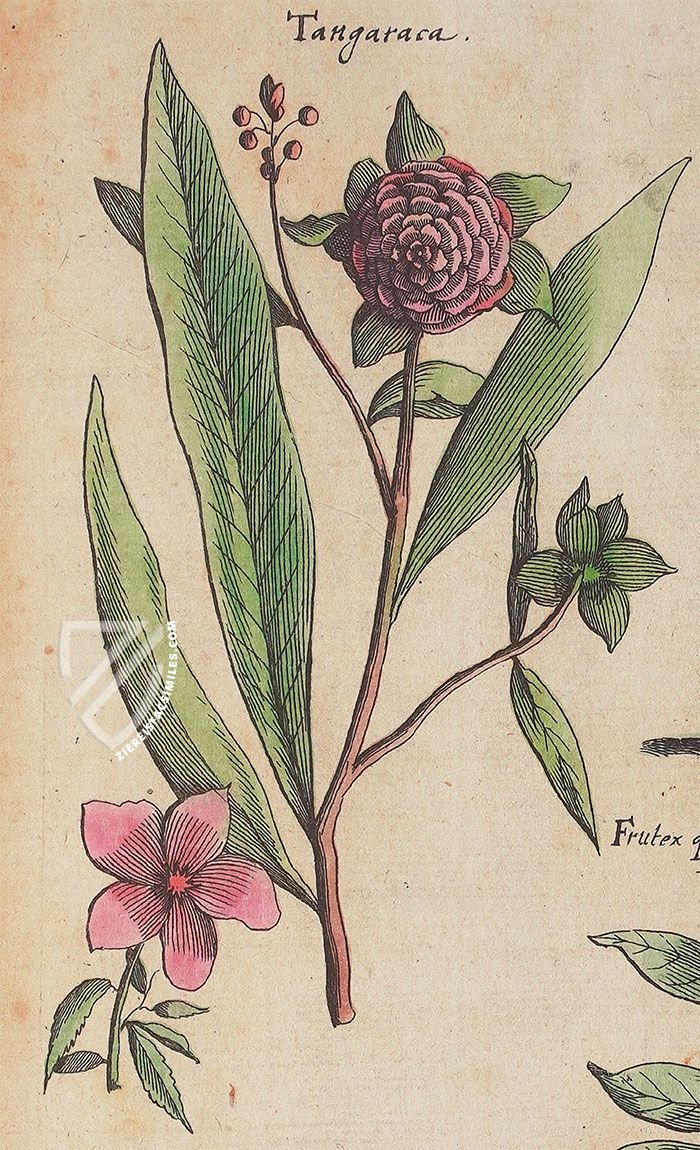
Historia Naturalis: De Arboribus et Fructicibus
Malus vulgaris
The Malus vulgaris or “common apple tree” originated from a wild ancestor, Malus sieversii, in Central Ancestor and is cultivated across the globe today as Malus domestica. Today, there are over 7,500 cultivars or types of apples that are raised for eating raw, cooking, or making cider and nearly 90 million apples are produced every year.
From ancient Greek and Norse mythology to Christianity, the apple has been culturally significant around the world. This fine colored engraving makes use of numerous shades of green and shows a robust and mature apple tree on a hill that is flanked by two young trees and a rootstock, which is used to plant new trees whose size and speed of growth can be controlled for easier harvesting.
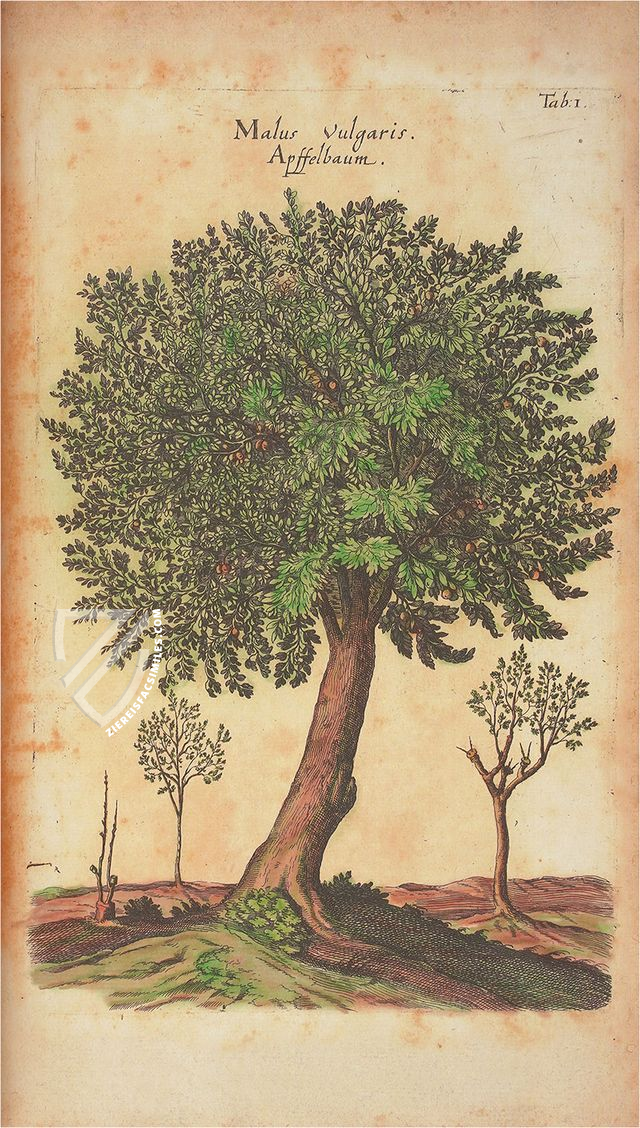
#1 Historia Naturalis: De Arboribus et Fructicibus
Language: Spanish
(7,000€ - 10,000€)
- Treatises / Secular Books
- Apocalypses / Beatus
- Astronomy / Astrology
- Bestiaries
- Bibles / Gospels
- Chronicles / History / Law
- Geography / Maps
- Saints' Lives
- Islam / Oriental
- Judaism / Hebrew
- Single Leaf Collections
- Leonardo da Vinci
- Literature / Poetry
- Liturgical Manuscripts
- Medicine / Botany / Alchemy
- Music
- Mythology / Prophecies
- Psalters
- Other Religious Books
- Games / Hunting
- Private Devotion Books
- Other Genres
- Afghanistan
- Armenia
- Austria
- Belgium
- Belize
- Bosnia and Herzegovina
- China
- Colombia
- Costa Rica
- Croatia
- Cyprus
- Czech Republic
- Denmark
- Egypt
- El Salvador
- Ethiopia
- France
- Germany
- Greece
- Guatemala
- Honduras
- Hungary
- India
- Iran
- Iraq
- Israel
- Italy
- Japan
- Jordan
- Kazakhstan
- Kyrgyzstan
- Lebanon
- Liechtenstein
- Luxembourg
- Mexico
- Morocco
- Netherlands
- Palestine
- Panama
- Peru
- Poland
- Portugal
- Romania
- Russia
- Serbia
- Spain
- Sri Lanka
- Sweden
- Switzerland
- Syria
- Tajikistan
- Turkey
- Turkmenistan
- Ukraine
- United Kingdom
- United States
- Uzbekistan
- Vatican City
- A. Oosthoek, van Holkema & Warendorf
- Aboca Museum
- Ajuntament de Valencia
- Akademie Verlag
- Akademische Druck- u. Verlagsanstalt (ADEVA)
- Aldo Ausilio Editore - Bottega d’Erasmo
- Alecto Historical Editions
- Alkuin Verlag
- Almqvist & Wiksell
- Amilcare Pizzi
- Andreas & Andreas Verlagsbuchhandlung
- Archa 90
- Archiv Verlag
- Archivi Edizioni
- Arnold Verlag
- ARS
- Ars Magna
- ArtCodex
- AyN Ediciones
- Azimuth Editions
- Badenia Verlag
- Bärenreiter-Verlag
- Belser Verlag
- Belser Verlag / WK Wertkontor
- Benziger Verlag
- Bernardinum Wydawnictwo
- BiblioGemma
- Biblioteca Apostolica Vaticana (Vaticanstadt, Vaticanstadt)
- Bibliotheca Palatina Faksimile Verlag
- Bibliotheca Rara
- Boydell & Brewer
- Bramante Edizioni
- Bredius Genootschap
- Brepols Publishers
- British Library
- C. Weckesser
- Caixa Catalunya
- Canesi
- CAPSA, Ars Scriptoria
- Caratzas Brothers, Publishers
- Carus Verlag
- Casamassima Libri
- Centrum Cartographie Verlag GmbH
- Chavane Verlag
- Christian Brandstätter Verlag
- Circulo Cientifico
- Club Bibliófilo Versol
- Club du Livre
- CM Editores
- Collegium Graphicum
- Collezione Apocrifa Da Vinci
- Comissão Nacional para as Comemorações dos Descobrimentos Portugueses
- Coron Verlag
- Corvina
- CTHS
- D. S. Brewer
- Damon
- De Agostini/UTET
- De Nederlandsche Boekhandel
- De Schutter
- Deuschle & Stemmle
- Deutscher Verlag für Kunstwissenschaft
- DIAMM
- Droz
- E. Schreiber Graphische Kunstanstalten
- Ediciones Boreal
- Ediciones Grial
- Ediclube
- Edições Inapa
- Edilan
- Editalia
- Edition Deuschle
- Edition Georg Popp
- Edition Leipzig
- Edition Libri Illustri
- Editiones Reales Sitios S. L.
- Éditions de l'Oiseau Lyre
- Editions Medicina Rara
- Editorial Casariego
- Editorial Mintzoa
- Editrice Antenore
- Editrice Velar
- Edizioni Edison
- Egeria, S.L.
- Eikon Editores
- Electa
- Emery Walker Limited
- Enciclopèdia Catalana
- Eos-Verlag
- Ephesus Publishing
- Ernst Battenberg
- Eugrammia Press
- Extraordinary Editions
- Fackelverlag
- Facsimila Art & Edition
- Facsimile Editions Ltd.
- Facsimilia Art & Edition Ebert KG
- Faksimile Verlag
- Feuermann Verlag
- Folger Shakespeare Library
- Franco Cosimo Panini Editore
- Friedrich Wittig Verlag
- Fundación Hullera Vasco-Leonesa
- G. Braziller
- Gabriele Mazzotta Editore
- Gebr. Mann Verlag
- Gesellschaft für graphische Industrie
- Getty Research Institute
- Giovanni Domenico de Rossi
- Giunti Editore
- Graffiti
- Grafica European Center of Fine Arts
- Guido Pressler
- Guillermo Blazquez
- Gustav Kiepenheuer
- H. N. Abrams
- Harrassowitz
- Harvard University Press
- Helikon
- Hendrickson Publishers
- Henning Oppermann
- Herder Verlag
- Hes & De Graaf Publishers
- Hoepli
- Holbein-Verlag
- Houghton Library
- Hugo Schmidt Verlag
- Idion Verlag
- Il Bulino, edizioni d'arte
- ILte
- Imago
- Insel Verlag
- Insel-Verlag Anton Kippenberger
- Instituto de Estudios Altoaragoneses
- Instituto Nacional de Antropología e Historia
- Introligatornia Budnik Jerzy
- Istituto dell'Enciclopedia Italiana - Treccani
- Istituto Ellenico di Studi Bizantini e Postbizantini
- Istituto Geografico De Agostini
- Istituto Poligrafico e Zecca dello Stato
- Italarte Art Establishments
- Jan Thorbecke Verlag
- Johnson Reprint Corporation
- Josef Stocker
- Josef Stocker-Schmid
- Jugoslavija
- Karl W. Hiersemann
- Kasper Straube
- Kaydeda Ediciones
- Kindler Verlag / Coron Verlag
- Kodansha International Ltd.
- Konrad Kölbl Verlag
- Kurt Wolff Verlag
- La Liberia dello Stato
- La Linea Editrice
- La Meta Editore
- Lambert Schneider
- Landeskreditbank Baden-Württemberg
- Leo S. Olschki
- Les Incunables
- Liber Artis
- Library of Congress
- Libreria Musicale Italiana
- Lichtdruck
- Lito Immagine Editore
- Lumen Artis
- Lund Humphries
- M. Moleiro Editor
- Maison des Sciences de l'homme et de la société de Poitiers
- Manuscriptum
- Martinus Nijhoff
- Maruzen-Yushodo Co. Ltd.
- MASA
- Massada Publishers
- McGraw-Hill
- Metropolitan Museum of Art
- Militos
- Millennium Liber
- Müller & Schindler
- Nahar - Stavit
- Nahar and Steimatzky
- National Library of Wales
- Neri Pozza
- Nova Charta
- Oceanum Verlag
- Odeon
- Orbis Mediaevalis
- Orbis Pictus
- Österreichische Staatsdruckerei
- Oxford University Press
- Pageant Books
- Parzellers Buchverlag
- Patrimonio Ediciones
- Pattloch Verlag
- PIAF
- Pieper Verlag
- Plon-Nourrit et cie
- Poligrafiche Bolis
- Presses Universitaires de Strasbourg
- Prestel Verlag
- Princeton University Press
- Prisma Verlag
- Priuli & Verlucca, editori
- Pro Sport Verlag
- Propyläen Verlag
- Pytheas Books
- Quaternio Verlag Luzern
- Reales Sitios
- Recht-Verlag
- Reichert Verlag
- Reichsdruckerei
- Reprint Verlag
- Riehn & Reusch
- Roberto Vattori Editore
- Rosenkilde and Bagger
- Roxburghe Club
- Salerno Editrice
- Saltellus Press
- Sandoz
- Sarajevo Svjetlost
- Schöck ArtPrint Kft.
- Schulsinger Brothers
- Scolar Press
- Scrinium
- Scripta Maneant
- Scriptorium
- Shazar
- Siloé, arte y bibliofilia
- SISMEL - Edizioni del Galluzzo
- Sociedad Mexicana de Antropología
- Société des Bibliophiles & Iconophiles de Belgique
- Soncin Publishing
- Sorli Ediciones
- Stainer and Bell
- Studer
- Styria Verlag
- Sumptibus Pragopress
- Szegedi Tudomànyegyetem
- Taberna Libraria
- Tarshish Books
- Taschen
- Tempus Libri
- Testimonio Compañía Editorial
- Thames and Hudson
- The Clear Vue Publishing Partnership Limited
- The Facsimile Codex
- The Folio Society
- The Marquess of Normanby
- The Richard III and Yorkist History Trust
- Tip.Le.Co
- TouchArt
- TREC Publishing House
- TRI Publishing Co.
- Trident Editore
- Tuliba Collection
- Typis Regiae Officinae Polygraphicae
- Union Verlag Berlin
- Universidad de Granada
- University of California Press
- University of Chicago Press
- Urs Graf
- Vallecchi
- Van Wijnen
- VCH, Acta Humaniora
- VDI Verlag
- VEB Deutscher Verlag für Musik
- Verlag Anton Pustet / Andreas Verlag
- Verlag Bibliophile Drucke Josef Stocker
- Verlag der Münchner Drucke
- Verlag für Regionalgeschichte
- Verlag Styria
- Vicent Garcia Editores
- W. Turnowski Ltd.
- W. Turnowsky
- Waanders Printers
- Wiener Mechitharisten-Congregation (Wien, Österreich)
- Wissenschaftliche Buchgesellschaft
- Wissenschaftliche Verlagsgesellschaft
- Wydawnictwo Dolnoslaskie
- Xuntanza Editorial
- Zakład Narodowy
- Zollikofer AG

